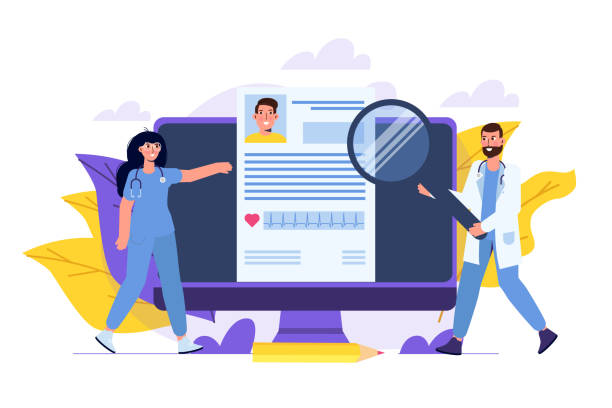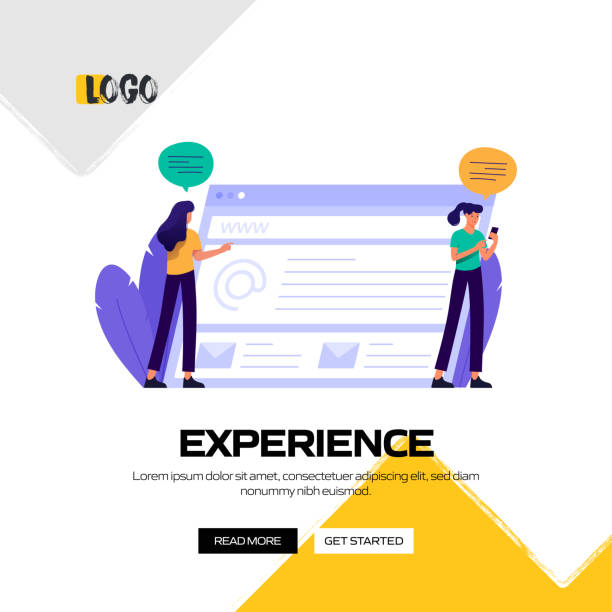Introduction to SEO-Optimized Website Design and Its Importance

In today’s digital world, merely having a website is not enough; your website must be discoverable.
This is where the concept of SEO (Search Engine Optimization) comes into play.
SEO-optimized website design means building a website that is not only attractive and functional for users but also technically easy for search engines like Google, Bing, and Yahoo to crawl and index.
The main goal of #SEO_design is to increase your website’s visibility in search results and attract more organic traffic.
A website properly designed for SEO can consistently attract new visitors who are looking for the products, services, or information you offer.
This is particularly crucial for businesses, as organic traffic typically has a higher conversion rate.
When a user searches for a specific keyword and your site appears at the top of the results, the likelihood of them clicking on it and converting into a customer is significantly higher.
Therefore, understanding and correctly implementing these principles in SEO-optimized website design is not an option but a necessity for sustainable online success.
This approach helps you surpass your competitors and establish a powerful presence on the web.
Does your current corporate website present a worthy image of your brand and attract new customers?
If not, turn this challenge into an opportunity with Rasaweb’s professional corporate website design services.
✅ Significantly improves your brand’s credibility and image.
✅ Paves the way for attracting leads and new customers.
⚡ For free and expert consultation, contact Rasaweb now!
Basic SEO Principles in the Initial Design Phases

SEO-optimized website design begins right from the initial planning and design stages.
Choosing an appropriate URL structure, meaning using readable and descriptive URLs, is one of the first steps.
For example, instead of complex URLs containing meaningless numbers and letters, use addresses like yourdomain.com/category/product-name.
The site’s navigation hierarchy must also be logical and user-friendly, allowing users and search engines to easily navigate your site and access different pages.
Using an up-to-date XML sitemap and submitting it to search engines helps them identify and crawl all your pages.
Also, choosing an appropriate domain name that is relevant to your business or content can help improve SEO, although its importance has decreased compared to the past.
Page load speed is another critical factor that impacts both user experience and SEO ranking.
A website that loads quickly has a lower bounce rate and users are more inclined to stay on it.
To optimize speed, you can compress images, use caching, and optimize codes (HTML, CSS, JavaScript).
These fundamental principles provide a strong foundation for an SEO-optimized website design and help you start on the right path to being seen in search engines.
Technical Aspects and Coding in SEO-Optimized Website Design

Technical aspects and coding play a vital role in SEO-optimized website design.
Using semantic HTML tags such as <header>, <nav>, <main>, <article>, <section>, and <footer> helps search engines better understand the structure and importance of different sections of your content.
This is especially important for structured data (Schema Markup), which can lead to richer search results (Rich Snippets), such as displaying star ratings or price information directly in Google results.
Furthermore, responsive design, meaning your website displays correctly on all devices (mobile, tablet, desktop), is one of Google’s very important ranking factors.
Given that a large portion of searches are done via mobile, a site that is not optimized for mobile creates a poor user experience and ultimately harms its SEO ranking.
Using HTTPS for website security not only builds user trust but is also considered a minor ranking factor by Google.
Clean and optimized coding, removal of unnecessary and duplicate code, and proper management of redirects (e.g., using 301 for permanent page transfers) are other vital technical aspects for SEO-optimized website design.
| SEO Technical Factor | Description and Importance |
|---|---|
| Readable URL Structure | Simple and descriptive URLs for better understanding by search engines and users. |
| Page Load Time | High site speed for improved user experience and Google ranking. |
| Mobile Compatibility (Responsive) | Correct site display on all devices, crucial for mobile SEO. |
| SSL/HTTPS Certificate | Site security and increased trust for users and search engines. |
| Semantic HTML Codes | Helps search engines understand the page’s structure and content. |
The Importance of Content and Keywords in SEO-Optimized Website Design

Content is the heart of every SEO-optimized website design.
Without quality and relevant content, even the best technical optimizations will be ineffective.
The first step in this regard is comprehensive and accurate keyword research.
You need to identify the words your target audience uses to search for your products or services.
These keywords should be used naturally and logically in the page title (Title Tag), meta description, and, of course, in the main body of the content.
But merely using keywords is not enough; your content must create real value for the user.
This means writing long, comprehensive, and accurate articles that answer users’ questions and address their needs.
Educational, guide, analytical, or even entertaining content can help increase user dwell time on the site and reduce the bounce rate, both of which are positive signals for search engines.
Using subheadings (H2, H3), lists, and relevant images with appropriate Alt tags improves your content structure and increases its readability.
An SEO-optimized website design always emphasizes valuable and continuous content production, as it is this content that attracts users and convinces search engines that your site is a credible and reliable source.
Worried about losing customers because you don’t have a professional e-commerce site?
With e-commerce website design by Rasaweb, forget these worries!
✅ Significant increase in sales and visitor-to-customer conversion rate
✅ Professional and user-friendly design that builds customer trust
⚡ Get free consultation from Rasaweb
User Experience (UX) and Its Role in SEO-Optimized Website Design

The relationship between User Experience (UX) and SEO is deep and reciprocal; it can be said that good UX brings good SEO.
Search engines, especially Google, have shifted their algorithms to reward websites that provide the best user experience.
Key factors such as user dwell time on the site, bounce rate, and the number of pages visited per session all indicate the quality of user experience and directly affect SEO ranking.
For an SEO-optimized website design, you must ensure that your website is not only visually appealing but also has intuitive and easy navigation.
Users should be able to easily find what they are looking for.
Responsive design, as mentioned earlier, is a crucial part of UX because it ensures the site works well on any device.
Also, text readability, sufficient use of white space, clear Call-to-Action buttons, and reduction of distractions all contribute to improving user experience.
Ultimately, a user-friendly site keeps users engaged for longer, increases their interaction, and is more likely to convert them into loyal customers or followers.
This positive cycle ultimately leads to improved ranking and overall success of your SEO-optimized website design.
The Importance of Internal and External Link Building for SEO

Links are the backbone of the internet and play a significant role in SEO-optimized website design.
Link building is divided into two main categories: internal and external.
Internal link building refers to the connections between different pages within a single website.
This type of link building helps search engines better understand your site’s structure and recognize the importance of different pages.
Moreover, strong internal links keep users on your site and direct them to other relevant content.
For example, in a blog post, you can link to your older, related articles.
On the other hand, external link building (backlinks) refers to links directed to your site from other websites.
These backlinks act as a ‘vote of confidence’ from other websites and are considered one of the strongest ranking signals for Google.
The more links you receive from reputable and relevant sites, the more your Domain Authority increases in the eyes of search engines, and your chances of ranking higher in search results improve.
Of course, link quality is much more important than quantity.
Spammy or irrelevant links can harm your SEO.
For an effective SEO-optimized website design, a link-building strategy must involve both improving internal links and striving to acquire high-quality backlinks.
SEO Tools and Monitoring in SEO-Optimized Website Design

To ensure that your SEO-optimized website design is working correctly and delivering desired results, continuous monitoring and data analysis are essential.
SEO tools provide significant help in this regard.
Google Search Console (GSC) is a free and vital tool that provides valuable insights into your site’s performance in Google search results.
This tool shows you which of your pages have been indexed, what errors exist, and for which keywords your site ranks.
Another tool, Google Analytics, helps you understand user behavior on your site.
You can see where users came from, how long they stayed on the site, and which pages they visited.
This information is invaluable for improving user experience and content strategy.
In addition to these free tools, there are other specialized tools such as Ahrefs, Semrush, Moz, and Yoast SEO (for WordPress) that offer more advanced capabilities, including in-depth keyword research, competitor analysis, backlink monitoring, and technical optimization suggestions.
Smart use of these tools helps you stay aware of your site’s SEO health and make timely adjustments to maintain and improve your ranking.
| SEO Tool Name | Primary Use | Type (Free/Paid) |
|---|---|---|
| Google Search Console | Monitor site performance in Google search, report errors. | Free |
| Google Analytics | Analyze user behavior, traffic sources, and conversion rates. | Free (advanced versions paid) |
| Ahrefs | Keyword research, backlink analysis, competitor analysis. | Paid |
| Semrush | SEO, PPC, content, social media, market research. | Paid |
| Yoast SEO (Plugin) | SEO optimization for WordPress sites. | Free (premium version paid) |
Common Challenges and Mistakes in SEO-Optimized Website Design

Despite all available guidance and tools, you may encounter common challenges and mistakes in the process of SEO-optimized website design that can harm your site’s ranking.
One of the biggest mistakes is neglecting user experience in favor of merely stuffing the site with keywords.
This approach, known as ‘Keyword Stuffing,’ is not only penalized by search engines but also creates a very poor user experience.
Another mistake is neglecting mobile optimization.
With the increasing use of mobile devices for searching, a site that does not display correctly on mobile will lose a large portion of its audience and will also drop in Google’s rankings.
Also, slow site loading speed, duplicate content, not using alt tags for images, and not paying attention to broken links are other common mistakes.
Remember that SEO is a continuous process and requires updating and adapting to new Google algorithms.
Ignoring these changes and not continuously updating the site can lead to a decline in search results.
Therefore, to have a sustainable SEO-optimized website design, you must always be vigilant and prevent these mistakes.
Does your current website convert visitors into customers or scare them away? Solve this problem forever with professional corporate website design by Rasaweb!
✅ Building strong credibility and branding
✅ Attracting target customers and increasing sales
⚡ Get a free consultation now!
The Future of SEO-Optimized Website Design and Emerging Trends

The world of SEO is constantly changing and evolving, and SEO-optimized website design must keep pace with these changes.
One of the most important emerging trends is Voice Search.
With the proliferation of voice assistants like Siri, Google Assistant, and Alexa, user search behavior has shifted towards more natural and conversational phrases.
This requires a change in keyword strategy and a focus on direct questions and answers.
Artificial Intelligence (AI) and Machine Learning (ML) also play an increasing role in SEO.
Algorithms like Google’s RankBrain evaluate content with a deeper understanding of user intent.
This means greater importance for comprehensive, high-quality, and topic-relevant content, not just keywords.
Furthermore, the importance of Core Web Vitals, which are Google’s metrics for measuring actual user experience regarding site speed, interactivity, and visual stability, has become more prominent than ever.
These trends indicate that SEO is moving towards placing user experience and content quality at its core.
Therefore, to ensure that your SEO-optimized website design will also be successful in the future, you must consider these trends and optimize your site based on them.
Is your website ready for these changes?
Conclusion and Final Recommendations for SEO-Optimized Website Design

Ultimately, SEO-optimized website design is a comprehensive and multifaceted process that includes technical optimization, quality content production, user experience improvement, and link-building strategy.
Success in today’s online space is almost impossible without attention to SEO.
By correctly implementing the principles discussed in this article, you can ensure that your website is not only attractive and functional for users but also highly visible in search engines.
The final recommendation is to view SEO as a long-term investment, not a quick fix.
SEO results may not be immediately visible, but with patience and continuous effort, you will gain sustainable and valuable organic traffic.
Regularly monitor your site, keep your content updated, and always strive to improve user experience.
Considering these points, your SEO-optimized website design will become a powerful tool for achieving your online goals.
This comprehensive approach ensures your strong and sustainable presence in the competitive world of the internet.
Frequently Asked Questions
| Question | Answer |
|---|---|
| What is SEO-optimized website design? | Designing a website optimized for both users and search engines to achieve higher rankings. This includes adhering to technical, content, and user experience principles. |
| Why is SEO important in website design? | The importance of SEO in website design is due to its role in increasing site visibility in search results, attracting organic traffic, improving user experience, and building credibility and trust among users. |
| What are the most important elements of SEO-friendly website design? | Responsiveness for mobile, high loading speed, clear navigation structure, proper use of heading tags (H1-H6), image optimization, and quality content. |
| What is the impact of responsiveness (mobile-friendliness) on SEO? | Google uses mobile-first indexing, meaning it prioritizes the mobile version of websites for ranking. Therefore, responsiveness is crucial for SEO. |
| What is the role of site speed in SEO? | Faster websites provide a better user experience, reduce bounce rate, and are favored by search engines. Site speed is one of Google’s ranking factors. |
| How to optimize images for SEO? | By compressing image file sizes, using descriptive and relevant file names, and most importantly, writing appropriate and content-relevant Alt Text. |
| What is the importance of content in SEO-centric design? | High-quality, relevant, and keyword-rich content is crucial for attracting and engaging users, as well as for ranking in search engines. Content is the king of SEO. |
| How does URL structure affect SEO? | Clean, descriptive, short URLs containing keywords help users and search engines better understand page content and appear in search results. |
| What is Schema Markup and what is its role in SEO? | Schema Markup is structured data that helps search engines better understand site content and display it as Rich Snippets in search results, which increases the Click-Through Rate (CTR). |
| Should SEO be considered from the beginning of website design? | Yes, it is highly recommended. Integrating SEO principles from the early phase of website design saves time and cost and leads to better and more sustainable long-term results. |
And other services of Rasaweb Advertising Agency in the field of advertising
Smart Conversion Rate Optimization: A novel service to increase click-through rates through Google Ads management.
Smart Direct Marketing: An effective tool for campaign management with custom programming.
Smart Brand Identity: A combination of creativity and technology to increase sales through attractive UI design.
Smart SEO: A combination of creativity and technology for user engagement through custom user experience.
Smart UI/UX: A creative platform to improve customer acquisition with an SEO-driven content strategy.
And over hundreds of other services in internet advertising, advertising consultation, and organizational solutions
Internet Advertising | Advertising Strategy | Advertorials
Sources
SEO-Optimized Website Design in Asanweb
Principles of SEO-Optimized Website Design in Web 24
The Importance of SEO-Optimized Website Design in Radyar
Guide to SEO-Friendly Website Design in Mahoor Web
? With Rasaweb Afarin, your business gets a new lease on life in the digital world. With expertise in secure website design, search engine optimization (SEO), and online advertising campaign management, we are with you on the path to success.
📍 Tehran, Mirdamad Street, next to Bank Markazi, Kazeroun Jonoubi Alley, Ramin Alley, No. 6

